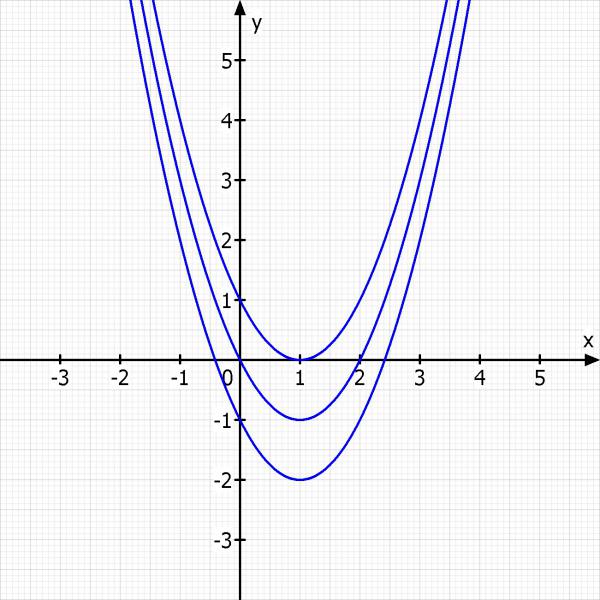1. Zeichne für
t = 1
t=0
t=-1

2. Nullstellen von f(x). Für welches t gibt es 1, 2 oder keine Nullstelle.
f(x) = 0
x^2 - 2x - t = 0
x = 1 ± √(t + 1)
Für t = -1 gibt es eine für t < -1 gibt es keine und für t > -1 gibt es zwei Nullstellen.
3. Für welches t gibt es mit dieser Gerade 1,2 oder keine Nullstelle
f(x) = g(x)
x^2 - 2x - t = -2x - 4
x = ± √(t - 4)
Für t = 4 gibt es einen Schnittpunkt. Für t < 4 keinen und für t > 4 zwei Schnittpunkte.